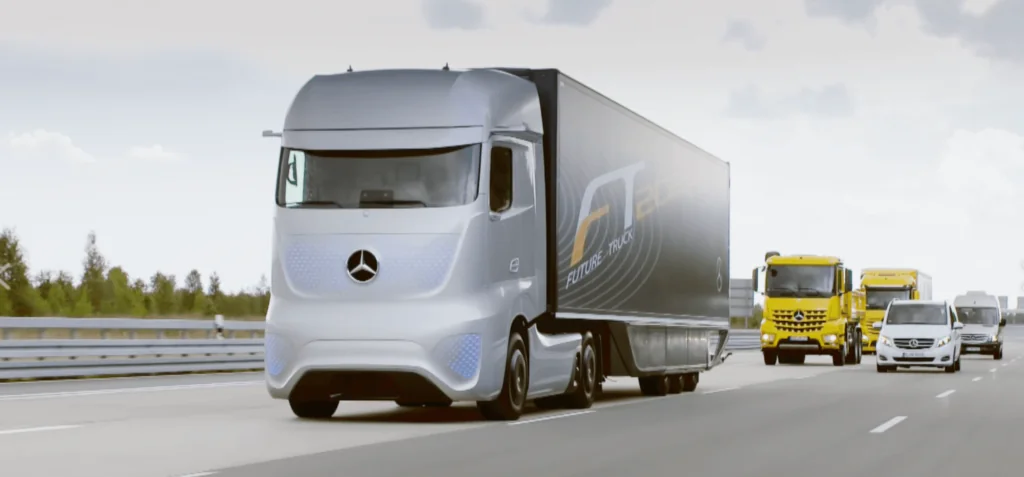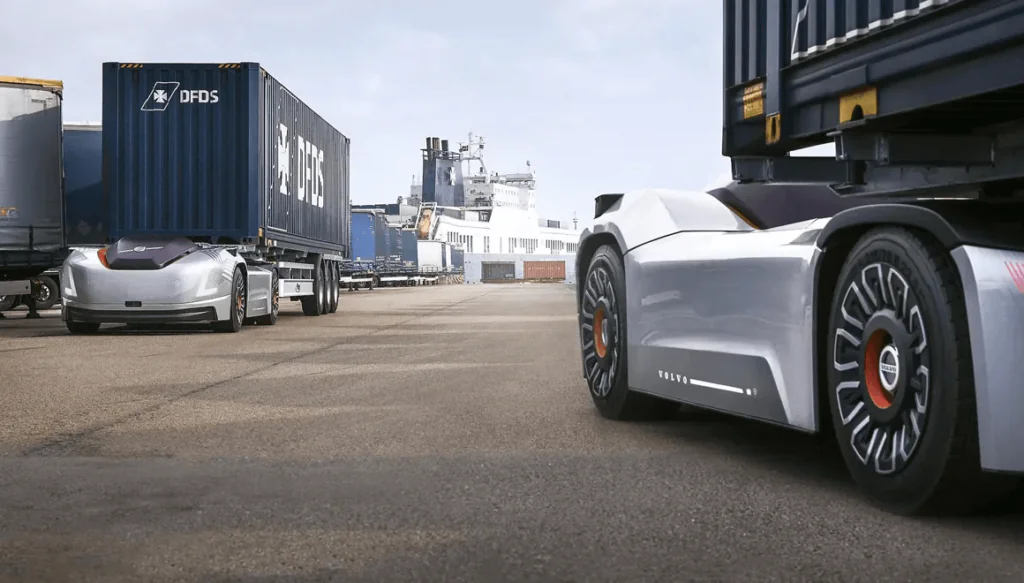Logistics of Future; Autonomous Logistics
In today’s world, automation and technology have started to play an extremely important role in many sectors, and the logistics sector, like many other sectors, aims to bring great innovation to the supply sector by using autonomous vehicles to advance itself and keep up with the times.

Source: https://autodiscoveries.com/2025-mercedes-self-driving-truck-driving-itself-mercedes-future-truck/
Since drivers are responsible for 94% of trafic accidents worldwide, it is not hard to conclude that replacing a human driver with a computer will reduce the number of car accidents and make roads safer. Likewise, the fact that the driver will not be paid because the vehicle is autonomous, that mandatory breaks will be avoided, that the cargo will be delivered faster and on time, and that financial profit will be made by completely avoiding damages caused by human errors makes autonomous logistics a few steps ahead. Of course, we cannot go without saying that this situation will increase unemployment in some sectors. Likewise, who will be legally responsible in the event of a possible accident is among the questions awaiting an answer.
When making a cost assessment between autonomous driving and manual driving, we generally do not need to consider very different parameters. However, compared to manual driving, autonomous driving constantly interacts with traffic telematics to make the most efficient driving possible, and automatically creates the most efficient route for you, avoiding detours on busy roads. Driving characteristics can be controlled depending on time and energy requirements.
Artificial intelligence or machine learning collects, interprets, and prioritizes data. It does not miss objects that are much farther away than the human eye can see, even in the dark or rain, and takes 360-degree, real-time images and interprets them to create conditions.
Importantly, the autonomous system is not distracted like a human driver. It is not interested in changing the radio, chatting, texting, or having a cup of coffee – actions that should be avoided as much as possible during the journey – and more importantly, the computer has no blind spots.

Source: https://www.linkedin.com/pulse/unlocking-full-potential-connected-trucks-through-analytics-babaei/?articleId=6349031556685922304
To give a few examples where autonomous logistics was first used or tested, in 2016, a private company managed to deliver fifty thousand cans of beer to the target address with a prototype vehicle it produced. Likewise, the world-famous automobile company Volvo is among the companies that are increasing their investments in this field and introduced the Volvo Vera, an autonomous truck that looks like a sports car, which may sound interesting to you. Vera does not have an area reserved for the driver. Volvo has made the design of the vehicle very similar to sports cars, attracting the attention of those who see it. The engineers in the team developing the vehicle state that they asked themselves the question of what the ideal transportation solution could be during the emergence of the autonomous truck model idea and that they wanted to create a different design that would carry the understanding of transportation into the future.

Source: https://www.volvotrucks.se/sv-se/news/magazine-online/2020/automatisering-paverkan-foerarjobb.html
Considering that the world’s biggest companies are making huge investments in this field, it is not difficult to predict that we will hear the concepts of autonomous trucks and autonomous logistics many times in the future! Times are changing, technology is advancing and the logistics industry has to keep up with that!




